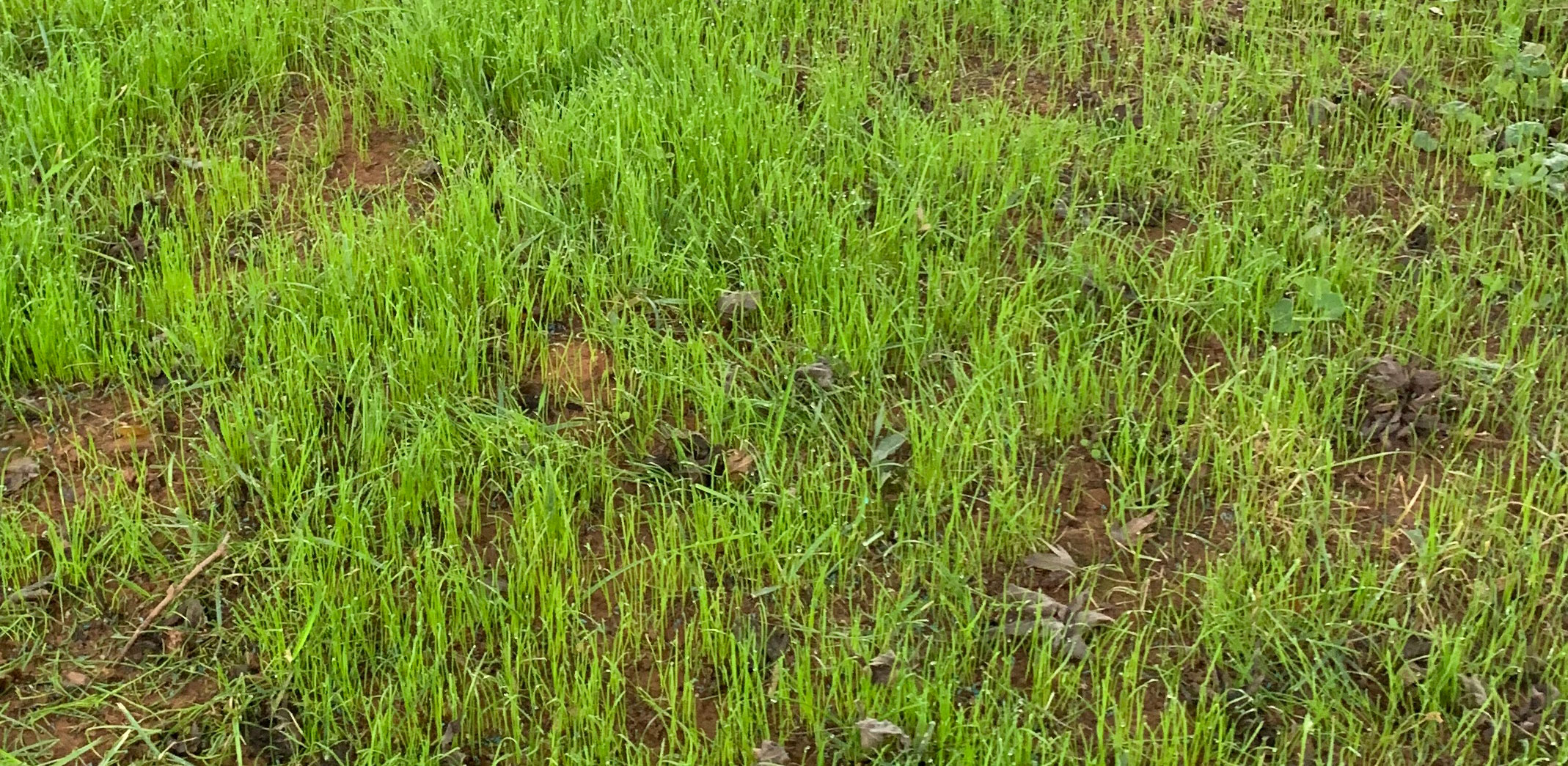Preparation is vital to a successful lawn seeding project, but remember that less can often be more when it comes to soil work. Over-tilling or over-working the soil can affect microbial populations and soil structure, which can lead to the failure of the seed to establish, even with fertilizer applied. Here’s why over-tilling/overworking affects the soil’s microbial populations and structure, which ends up harming seed establishment. Plus, find out how to properly prepare the soil for seeding.
When you disturb the ground with a tiller, rock hound, or power rake, you supply oxygen to the microbes in the soil (we cannot avoid exposing the soil to the air unless we can slit seed as it provides enough cover crop to maintain the soil’s integrity). The microbes will rapidly consume nitrogen in the soil, and the populations of those microbes rapidly multiply until they have depleted the resource. Seeds will be hard to establish successfully without nitrogen in the soil.
Putting down straw or hydro mulch compounds the nitrogen depletion problem due to its high carbon-to-nitrogen ratio, which means even more nitrogen is needed in the soil for the microbes to break it down. So, decomposing straw or mulch will take nitrogen from the soil and the turf. That is why you need to add nitrogen to compost piles to get them to break down. Adding organic forms of nitrogen, like Nature Safe 8-5-5, or incorporating good compost will help build these reserves back up. You can add this during the installation, into the hydroseeder tank, or the aftercare program.
Over-tilling or over-working most commonly affects soil structure. The structure of soil particles is a significant and fragile resource. Even when the soil is overworked, you can create a perfectly level and fluffy surface. This seemingly utopic environment is just a facade that will soon result in compacted anaerobic soil. Over-tilling will destroy the soil colloids and lignins, which result in much smaller soil particles. When soil particles are small, they tend to compact more easily, especially when they get watered. This can lead to the formation of a hydrophobic crust and cracks on the soil surface, which is often seen on newly installed soil. Seed establishment will likely fail or be thin and weak due to the compaction. Consider tilling topsoil or compost into your soil to mitigate this issue. Just be sure to avoid overly aggressive soil preparation techniques.
How to Properly Prepare the Soil for Seeding
Preparing the Soil for Seeding: Managing Weeds
Preventing weed problems when preparing an existing site for seed is crucial. Almost all soil contains dormant weed seeds, which quickly germinate when exposed to sunlight, moisture, and warming soil temperatures. When soil is disrupted, such as during tilling, loosening, or raking for planting, weed seeds that were previously dormant become exposed to those growing conditions. The presence of weeds in a newly installed turfgrass area can usually be attributed to various sources, including the pre-existing soil, freshly added topsoil, or even the accidental introduction of weed seeds through wind, equipment, or other means.
Once you have prepared the seedbed, lightly irrigate the area to encourage the intentional germination of any existing weed seeds before planting the desired turfgrass. After the weeds have germinated, they can be easily managed and controlled. Once you have successfully controlled the weeds, we recommend gently loosening the upper half-inch layer of soil in preparation for planting. Note: Before planting your grass seed, it’s important to avoid using pre-emergent weed control. Doing so could cause damage or prevent successful germination.
Preparing the Soil for Seeding: Conducting Soil Tests
Before establishing seed, conduct a soil test. Soil test results provide insights about soil so you can see what your soil needs. Soil tests measure the soil’s pH, cation exchange capacity (CEC), electrical conductivity, and organic matter. Test results also reveal nutrient deficiencies or excesses. Your Advanced Turf Sales Rep can guide you through and give you more information on soil testing.
Preparing the Soil for Seeding: Thatch Removal
Before overseeding, clear out any thatch buildup in the spot where you plan to plant the seed. A complete site renovation is not typically needed, nor will the accumulated material need to be incorporated into the subsoil profile. Instead, removing the material will create a seed bed and help ensure the new grass can be re-established quickly.
Preparing the Soil for Seeding: Final Grade
When getting the soil ready for seed, setting up a favorable final grade is crucial. Here’s how:
- Remove relatively large rocks or other debris
- Remove raised areas or low spots
- Final slopes should be situated 1-2% away from any nearby buildings for good surface drainage
- Adjust the grade, so it is approximately 1″ below the hard surface of any sidewalk or patio edges












